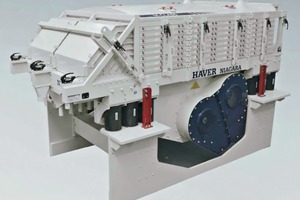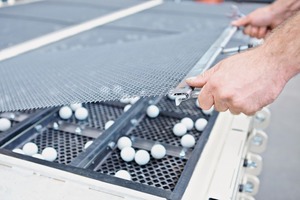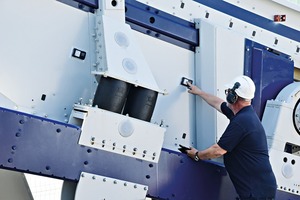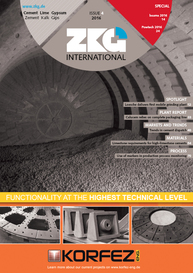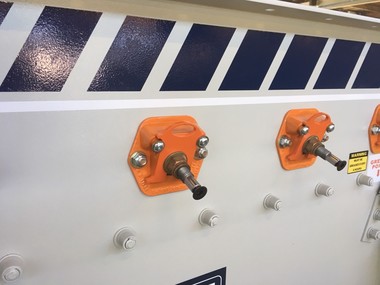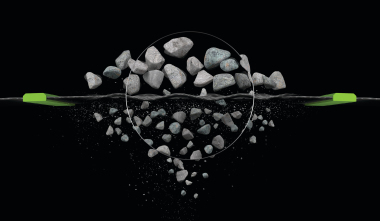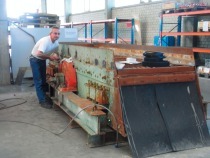Haver Niagara innovations in mineral procession
Niagara M-Class –
Classifying dry bulk materials
In 2015 Haver & Boecker further developed the proven Niagara M-Class in order to optimize the different features of its predecessor models and added an even more efficient, high-performance multiple deck screening machine to its product line.
The Niagara M-Class is the optimum solution when it comes to fine and ultrafine particle ranges and when multiple cut sizes are needed and cut size precision is increasingly essential.
The application range of linear vibrating screens is broad, from classifying industrial minerals to ores and metals.
Depending on the design, the multiple-deck screening machine has a vast screen surface (58 m²) while at the same time is characterized by its space-saving feature. In modular design the individual screen frames are horizontally stacked above each other and serve to act as the frame of the machine. The ability to later adapt the machine, e.g. in order to increase material throughput, is an advantage of this design.
The machine’s further development ensures even more exact screening results and prevents screen cloth clogging. The number range has therefore been extended from 2 G to 4.5 G. Depending on the task at hand, the frequency and the amplitude are adjusted accordingly.
Thanks to the machine’s isolation frame, dynamic loads are reduced to a minimum and vibrations though the building are avoided.
The machine’s ease-of-maintenance is considerably improved by new types of transversal tensioning. The double screen-frame is no longer needed and the additional costs for frame tensioning service are redundant.
Replacing standard screen cloth can be done more rapidly, with greater ease, partially, and even by the customer himself.
The Niagara M-Class multiple deck screening machine is offered in two sizes, whereby the number of screen decks and the technical specifications vary in accordance with the job at hand.
In addition to its accurate cut size, the classification of up to 11 different product fractions with only one point of transfer for each fraction is another advantage.
Puls Vibration Analysis –
monitoring and detecting errors
within vibration screening machines
The system consists of up to eight wireless sensors that can be flexibly mounted with magnets to all vibrating screening machines. It can be used both on Haver machines and other brand name machines as well.
The system measures during the running process in real time, with or without material, the following: vibration amplitude, acceleration, acceleration direction machine rotational speed, and 3D vibration form.
The Puls Vibration Analysis goes to work when one of the following or similar damages occur to the machine: Cracks, poor cut size quality, missing throughput, increased damage to bearings or jammed particles.
In addition to real time display on a tablet, all the information from the sensors is saved electronically in a databank. The report provides a visual inspection of the vibrational behavior and the shape as well as data on acceleration, frequency, speed and inclination. It finds deviations between the measured points and suggests recommendations for balancing, acceleration, machine cycle and speed. It offers input and discharge analyses as well as diagonal measurements.
The data can be sent to Haver & Boecker and analyzed by a team of engineers. Next the team writes up a report for the customer that includes an analysis of machine performance and recommendations for optimization. If the results are positive, the customer can rest assured that his machine is in order.
With the use of the Puls Vibration Analysis, the time between maintenance service visits at customers is extended and more easily planned. Downtime is prevented. This reduces operating costs and increases profit per ton.
//www.haverniagara.com" target="_blank" >www.haverniagara.com:www.haverniagara.com

